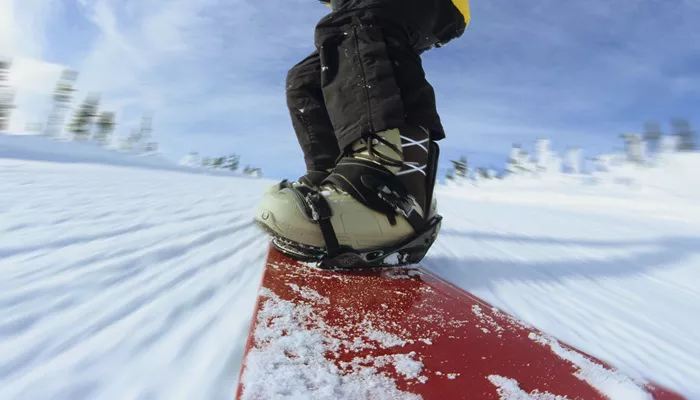Snowboarding is an exciting and dynamic winter sport that requires control, balance, and technique. One of the most essential skills for any snowboarder—whether a beginner or advanced rider—is knowing how to stop effectively. Being able to stop safely not only prevents collisions but also gives riders the confidence to navigate slopes with ease.
Stopping in snowboarding involves several techniques, each suited for different situations and rider skill levels. From beginner-friendly methods like the falling leaf technique to more advanced stops like the hockey stop, mastering these techniques ensures a safer and more enjoyable ride. In this guide, we will explore various stopping techniques, how to execute them properly, and common mistakes to avoid.
Why Learning to Stop Is Essential
Before diving into the techniques, it is important to understand why stopping is a fundamental skill in snowboarding:
Safety: Being able to stop prevents crashes and accidents on the slopes.
Control: Stopping enhances overall control and stability when riding.
Confidence: Knowing you can stop anytime reduces fear and hesitation while snowboarding.
Adaptability: Different stopping techniques allow you to handle various snow conditions and terrains.
Basic Techniques for Stopping
1. The Heel Edge Stop (Beginner-Friendly)
The heel edge stop, also known as the “heel-side edge stop,” is one of the easiest ways to stop on a snowboard.
How to Perform the Heel Edge Stop:
Face Downhill: Start by pointing your snowboard downhill with both feet strapped in.
Shift Your Weight Back: Gradually shift your weight onto your heels, keeping your knees slightly bent.
Lift Your Toes: Gently lift your toes to engage the heel edge of the board.
Apply Pressure Evenly: Apply even pressure on your heels while maintaining balance.
Slow to a Stop: As the edge digs into the snow, you will gradually come to a complete stop.
Common Mistakes to Avoid:
Leaning Too Far Back: This can cause you to lose balance and fall backward.
Not Engaging the Edge Properly: If you don’t apply enough pressure, you won’t stop efficiently.
2. The Toe Edge Stop
The toe edge stop is similar to the heel edge stop but utilizes the toe-side edge of the snowboard.
How to Perform the Toe Edge Stop:
Face Uphill: Turn your body so that your chest faces uphill.
Shift Your Weight Forward: Lean slightly forward and put pressure on your toes.
Lift Your Heels: Gently lift your heels off the board while keeping your balance.
Dig in the Toe Edge: The more pressure you apply, the quicker you will come to a stop.
Hold the Position: Maintain the stop position until you feel stable.
Common Mistakes to Avoid:
Leaning Too Much: Excessive forward lean can cause you to fall on your face.
Uneven Weight Distribution: Ensure equal pressure on both feet to avoid turning unintentionally.
Intermediate Stopping Techniques
3. The Falling Leaf Method
This technique helps riders gain control while learning to stop and is useful on steeper slopes.
How to Perform the Falling Leaf:
Start on Your Heel or Toe Edge: Begin by riding slowly on either your heel or toe edge.
Shift Your Weight Left and Right: Gradually shift your weight from one side to the other, moving in a zigzag pattern.
Control Your Speed: The constant edge engagement helps reduce speed and eventually bring you to a stop.
Common Mistakes to Avoid:
Not Keeping the Board Flat Between Turns: This can lead to catching an edge and falling.
Shifting Weight Too Abruptly: This may cause a loss of balance.
4. The Hockey Stop (Advanced Technique)
The hockey stop is a quick and efficient way to stop immediately, similar to how hockey players stop on ice.
How to Perform the Hockey Stop:
Build Some Speed: Gain a little momentum before attempting the stop.
Rotate Your Hips and Shoulders: Turn your hips and shoulders perpendicular to the slope.
Slide the Board Sideways: Quickly shift your weight onto your heels or toes while pushing the board sideways.
Engage the Edge: Dig the edge into the snow to create friction and stop abruptly.
Balance Your Stance: Maintain a low and centered stance to absorb the sudden stop.
Common Mistakes to Avoid:
Over-Rotating: Turning too much can cause you to lose control.
Not Committing to the Edge: Hesitation can make the stop ineffective and cause skidding.
How to Stop on Icy or Steep Slopes
Stopping on icy or steep terrain requires extra precision and balance.
Tips for Stopping on Ice:
Use the Edge Gently: Avoid sudden movements to prevent slipping.
Lower Your Center of Gravity: Bend your knees more than usual to stay stable.
Apply Gradual Pressure: Slowly increase edge pressure instead of stopping abruptly.
Tips for Stopping on Steep Slopes:
Use the Falling Leaf Technique: Helps control descent before stopping completely.
Look Where You Want to Go: Maintain focus to keep your balance.
Control Speed Early: Do not wait until you’re moving too fast to attempt a stop.
Practicing Stopping Techniques
To master stopping techniques, consistent practice is key. Here are a few tips:
Start on Gentle Slopes: Practice stops on beginner-friendly terrain before moving to steeper slopes.
Use a Controlled Speed: Avoid excessive speed until you are comfortable with stopping.
Work on Balance and Posture: Keep your knees bent and body relaxed for better control.
Practice with a Friend or Instructor: Getting feedback can help correct mistakes and improve technique.
Conclusion
Stopping is one of the most crucial skills in snowboarding, allowing riders to navigate slopes safely and confidently.
Whether you’re a beginner mastering the heel edge stop or an advanced rider perfecting the hockey stop, each technique plays a vital role in maintaining control on the mountain.
By understanding different stopping methods and practicing them regularly, snowboarders can improve their overall riding ability and enjoy the sport with greater confidence. So, hit the slopes, practice these stopping techniques, and ride with control and style!

